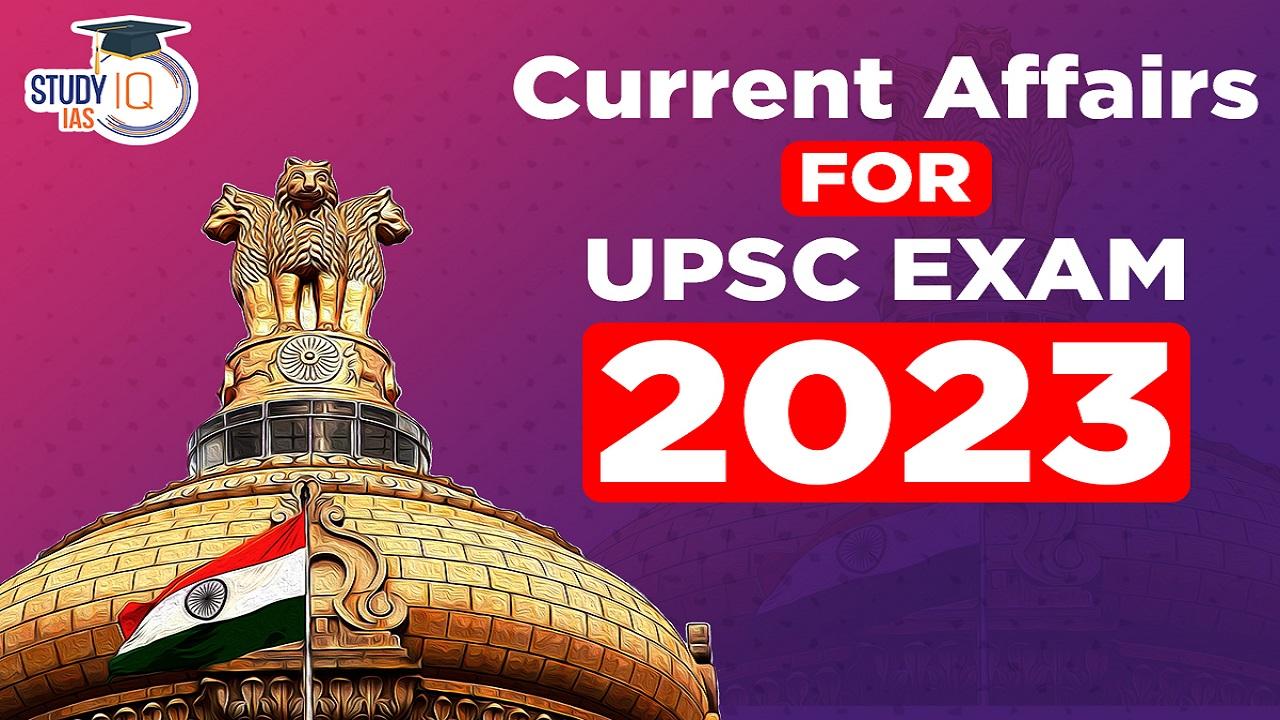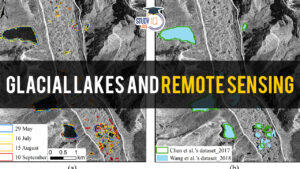Current Affairs 26th August 2023 for UPSC Prelims Exam
State of India’s Birds Report 2023
Context: The second edition of the State of India’s Birds (SoIB) Report has been recently launched at the India International Centre in New Delhi.
More on News
- SoIB 2023 is based on 30+ million field observations from over 30,000 birdwatchers and researchers across India.
- The assessments rely on three indices: Change in abundance long-term trend (change over 30 years) and current annual trend (change over past seven years) and the third is a measure of distribution range size in India.
- Wildlife Trust of India is one of the 13 partner organisations that have contributed extensively to the report.
Key Highlights of the Report
- Decline of Species: The report assessed 942 species of birds and found that populations of raptors, migratory shorebirds, and ducks are on the sharpest decline in the country.
- High Priority for Immediate Conservation Action: It lists 178 bird species in the country as being of “High Priority” for immediate conservation action.
- Species Showing Increasing Trend: Several bird species such as the India Peafowl, Rock Pigeon, Asian Koel and House Crow, House Crow, Rock Pigeon and the Alexandrine Parakeet are showing an “increasing trend”.
- Birds Showing Declining Trend:
- Ducks: Large congregations of ducks occur in Chilika, Pulicat, Rann of Kachchh, Maguri, Loktak, Sambhar, and Keoladeo. The
Baer’s Pochard, Common Pochard, Andaman Teal have been found to be most vulnerable. - Riverine sandbar-nesting birds: They are also showing a decline due to widespread pressures on rivers from irrigation schemes, transportation, human disturbance, domestic use, and pollution from agricultural and industrial chemicals, variations in the water level and sand mining.
- Eurasian Spoonbill: It has declined by more than 50% in the long term and by over 6% annually since 2015.
- Sarus Crane has rapidly declined over the long term and continues to do so.
- Ducks: Large congregations of ducks occur in Chilika, Pulicat, Rann of Kachchh, Maguri, Loktak, Sambhar, and Keoladeo. The
- Most Vulnerable Species: While half of all bustards worldwide are threatened, the three species that breed in India, the Great Indian Bustard, the Lesser Florican, and the Bengal Florican have been found to be most vulnerable.
- Decline in Migratory Species: Long-distance migrants, such as migratory birds from Eurasia or the Arctic, have declined the most – by more than 50% – followed by short-distance migrants.
- Dietary Requirements of Birds: Birds that feed on vertebrates and carrion have declined the most, “suggesting that this food resource contains harmful pollutants’’.
- Near Extinction Birds: Vultures were nearly driven to extinction by consuming carcasses contaminated with diclofenac.
- Raptors are one of the most affected species in the country due to agrochemicals.
- Endemic Birds:
- Birds that are endemic to the Western Ghats and Sri Lanka biodiversity hotspot have rapidly declined in India over the past few decades.
- In the Western Ghats, most endemics are inhabitants of rainforest, such as White-bellied Treepie and Wayanad Laughingthrush.
- In particular, the Great Grey Shrike has shown a long-term decline of more than 80%.
- Species Requiring Conservation: The report found that grassland specialists have declined by more than 50% – indicating the importance of protecting and maintaining grassland ecosystems.
- Major Threats: The report also highlighted several major threats including forest degradation, urbanization and energy infrastructure – that bird species face across the country.
- Environmental pollutants including veterinary drugs such as nimesulide still threaten vulture populations in India, it noted.
- Of concern also are the impacts of climate change (such as on migratory species), avian disease and illegal hunting and trade.
Current Affairs 25th August 2023 for UPSC Prelims Exam
Revised National Curriculum Framework (NCF)
Context: The final version of National Curriculum Framework (NCF) was recently released by the National Council of Educational Research and Training (NCERT).
More on News
- NCF, drafted by the Union government-appointed national steering committee headed by K Kasturirangan, the former chairman of the Indian Space Research Organisation is in line with the National Education Policy (NEP) 2020.
- The NCF defines benchmarks for NCERT textbooks taught in the schools affiliated to the Central Board of Secondary Education (CBSE) in classes 3 to 12, teaching and learning practices, and assessment methods adopted by the schools.
- NEP emphasized on teaching Indian languages and offering them as medium of instruction in school and higher education.
- However, these guidelines will remain recommendatory in nature for state education boards given that education is a state subject.
Revised National Curriculum Framework (NCF): Key Points
- Emphasis on Indian languages: The revised framework makes the study of Indian languages an integral part of school education and allows students the freedom to choose from a range of subjects across streams.
- Students will study three languages in grades 9 and 10, two of which will have to be Indian; and two languages in grades 11 and 12, one of which will have to be Indian.
- The choices for languages would include Sanskrit and other modern/classical languages and literature of India, including classical Tamil, Telugu, Kannada, Malayalam, Odia, Pali, Persian, and Prakrit, among others.
- In addition to this, foreign languages, such as French, German, Japanese, and Korean would also be offered.
- Division of School Education: The revised NCF divides school education into four stages:
- Foundational (preschool to grade 2)
- Preparatory (grades 2 to 5)
- Middle (grades 6 to 8):
- In the middle stage, students are expected to study, apart from the languages, mathematics, art education, physical education, science, social science, and a subject of vocational education.
- Secondary (grades 9 to 12):
- A subject of environmental education will be added in grades 9 and 10.
- In this phase, students have the freedom to choose the remaining four or five subjects from different streams commerce, sciences, humanities leaving ample room for interdisciplinarity.
- Holding the Class 12 board exam twice a year: To ensure students have enough time and opportunity to perform well.
- Students can appear for a board exam in subjects they have completed and feel ready for.
- They will also be allowed to retain the best score.
- Semester System: It also recommended a semester system for Class XI and Class XII, and no hard separation between arts, humanities, and sciences.
Defence Acquisition Council (DAC)
Context: To enhance the efficiency of the Indian Air Force, the DAC has granted acceptance for procurement and installation of Electronic Warfare (EW) Suite on Mi-17 V5 Helicopters under Buy (Indian-IDDM) category.
About Defence Acquisition Council (DAC)
- Definition: The Defence Acquisition Council is the highest decision-making body in the defence ministry for deciding on new policies and capital acquisitions for the three services and the Indian Coast Guard.
- Aim: To ensure expeditious procurement of the approved requirements of the armed forces.
- Composition:
- Chairman: The defence minister is the chairman of DAC.
- Members: Its members include the Chief of Defence Staff (CDS) and chiefs of the Army, Navy, and Air Force.
- Functions:
- Accord of acceptance of necessity to acquisition proposals.
- Categorization of the acquisition proposals relating to ‘Buy’, ‘Buy & Make’, and ‘Make’.
- Look into issues relating to single vendor clearance.
- Take decisions regarding ‘offset’ provisions in respect of acquisition proposals above Rs 300 crore.
- Take decisions regarding the Transfer of Technology under the ‘Buy & Make’ category of acquisition proposals.
- Field trial evaluation.
Gulf Cooperation Council
Context: The Gulf Cooperation Council (GCC) is keen to resume negotiations for a potential trade agreement with India.
About Gulf Cooperation Council (GCC)
- Definition: It is a political and economic alliance of six Middle Eastern countries—Saudi Arabia, Kuwait, the United Arab Emirates, Qatar, Bahrain, and Oman.
- The GCC was established in Riyadh, Saudi Arabia, in May 1981.
- Aim:
- To have coordination, integration and inter-connection between Member States in all fields,
- Strengthening ties between their peoples,
- Formulating similar regulations in various fields such as economy, finance, trade, customs, tourism, legislation, administration,
- Fostering scientific and technical progress in industry, mining, agriculture, water and animal resources,
- Establishing scientific research centres, setting up joint ventures, and encouraging cooperation of the private sector.
- Composition: The structure of the GCC consists of the Supreme Council, the Ministerial Council and the Secretariat General.
- The Supreme Council (the highest authority of the GCC) comprises the Heads of State of the six member countries. The chairmanship of the Supreme Council is held by each Member State in turn.
- The Ministerial Council comprises the Foreign Ministers of the six member countries.
- The Secretariat General prepares reports, studies, accounts and budgets for the GCC.
- Secretariat: The Secretariat is in the city of Riyadh.
- GCC and India: The council is the largest trading bloc of India.
- Among the economic regions, GCC is the top source of imports for India.
- Imports from GCC countries were $133 billion in 2022-23, up 20.3% on year, while exports were 16.7% higher at $51.3 billion.
- India’s exports to the GCC member countries grew by 58.26% to about USD 44 billion in 2021-22 against USD 27.8 billion in 2020-21.
- Among the economic regions, GCC is the top source of imports for India.



 Current Affairs 27th April 2024 for UPSC...
Current Affairs 27th April 2024 for UPSC...
 Small Finance Banks, Key Features and Op...
Small Finance Banks, Key Features and Op...
 Glacial Lakes and Remote Sensing
Glacial Lakes and Remote Sensing

















